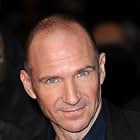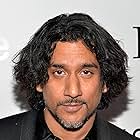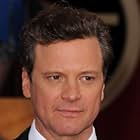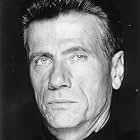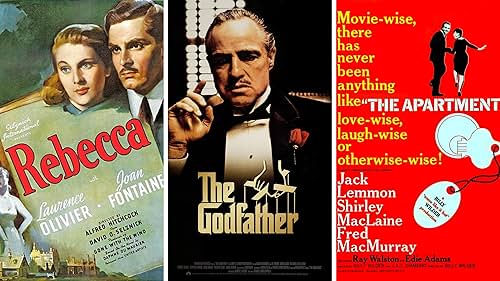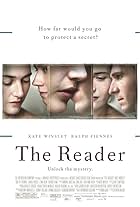Al final de la Segunda Guerra Mundial, una joven enfermera atiende a una víctima de accidente de avión gravemente herida. Conocemos su historia en flashbacks que revelan un fatídico romance.Al final de la Segunda Guerra Mundial, una joven enfermera atiende a una víctima de accidente de avión gravemente herida. Conocemos su historia en flashbacks que revelan un fatídico romance.Al final de la Segunda Guerra Mundial, una joven enfermera atiende a una víctima de accidente de avión gravemente herida. Conocemos su historia en flashbacks que revelan un fatídico romance.
- Ganó 9 premios Óscar
- 62 premios ganados y 78 nominaciones en total
- Dirección
- Guionistas
- Todo el elenco y el equipo
- Producción, taquilla y más en IMDbPro
Best Picture Winners by Year
Best Picture Winners by Year
Argumento
¿Sabías que…?
- TriviaThe Germans who shoot at Almásy's plane at the beginning were actually tourists roped into the production because they couldn't afford any more extras.
- ErroresKatharine Clifton (Scott-Thomas) explains to Count László Almásy (Fiennes), that her husband is map making in Ethiopia. The year at this point is 1939, and the country was known as Abyssinia until 1945.
- Citas
Katharine Clifton: My darling. I'm waiting for you. How long is the day in the dark? Or a week? The fire is gone, and I'm horribly cold. I really should drag myself outside but then there'd be the sun. I'm afraid I waste the light on the paintings, not writing these words. We die. We die rich with lovers and tribes, tastes we have swallowed, bodies we've entered and swum up like rivers. Fears we've hidden in - like this wretched cave. I want all this marked on my body. We are the real countries. Not boundaries drawn on maps with the names of powerful men. I know you'll come carry me out to the Palace of Winds. That's what I've wanted: to walk in such a place with you. With friends, on an earth without maps. The lamp has gone out and I'm writing in the darkness.
- Créditos curiososDisclaimer in end credits: "While a number of the characters who appear in this film are based on historical figures, and while many of the areas described - such as the Cave of Swimmers and its surrounding desert - exist and were explored in the 1930s, it is important to stress that this story is a fiction and that the portraits of the characters who appear in it are fictional, as are some of the events and journeys."
- Bandas sonorasYes! We Have No Bananas
Words and Music by Frank Silver and Irving Cohn (as Irving Conn)
Published by Skidmore Music Co., Inc.
"The English Patient", based on a novel by the same name by Michael Ondaatje, is like "The Godfather: Part II" (1974) in the sense of how it's constructed. It's a blending of two stories: the past and the present and it all revolves around the titular character: an English patient in the post years of World War Two. Ralph Fiennes plays the English patient, who has been scarred for life by a plane crash, and being taken care of in an isolated church by a single nurse played marvelously by Juliette Binoche. Apart from bonding with her raspy-voiced, troubled patient, Binoche comes to learn about his past when a stranger (Willem Dafoe) arrives and the two men appear to know each other.
That's just one of the two beautifully crafted stories that shape this film. The other one, told in flashback, is the patient's past, before he was scarred and dying in a bed. The story of the present mixed with the patient's past and his love affair that tragically changed his life forever.
To be blunt, "The English Patient" is a love story blended with a sweeping epic sensation and it blends magnificently. What I really admired about the love story between Ralph Fiennes and Kristin Scott Thomas was how passionate, how obsessive, how enchanting it was shown on screen. Usually in love stories, such as Minghella's later "Cold Mountain" (2003), the romantic elements seem far more lustful than obsessive to me. Some of the love scenes feature elements that may tend to be associated more with lust than love, but still, because it is so well developed and not rushed and not exploited out of proportion, we can believe that there is a sure, true love between these characters. It reminded me a lot of "Vertigo" (1958) in how well the filmmakers and performers convinced us that these were two actual human beings who truly fell in love with each other.
Performances all around were great. I was especially enthralled by the performance by Juliette Binoche, who took home the Oscar for her performance the following year. I also liked Willem Dafoe playing the sort of cynical, questionable character that he's always quintessential at playing. And of course I can't leave out Fiennes and Scott Thomas and their portrayals of two very passionate lovers.
Despite my enormous enthusiasm for this epic, I would be dishonest if I were to describe it as a perfect film. There are two flaws that I cannot glance over. Number one, it is a little too long and the reason for this is my second complaint, there are a few unnecessary subplots. I was not enchanted or particularly interested with the second love story between Binoche and a bomb specialist played by Naveen Andrews. My research has led me to assume that this plot element comes from the original book and I'm sure it worked perfectly in there, but in the film, it just seems a little distracting and the relationship between the two characters didn't fascinate me. I was far more interested by Fiennes character and his relationships with his two leading actresses.
Nevertheless, these two flaws are easily forgivable even if they do slow things down a bit. Those put aside, "The English Patient" is an extraordinary achievement of film-making. To me, it was sort of like an insane mix up between "Casablanca" (1942) and "Lawrence of Arabia" (1962), two remarkable and better films, and this effective blend proved to be well worth my time. It is a real shame that Anthony Minghella has left us. For he was a truly gifted filmmaker. This is all the evidence anybody needs.
- TheUnknown837-1
- 25 may 2009
- Enlace permanente
Selecciones populares
Detalles
- Fecha de lanzamiento
- Países de origen
- Sitios oficiales
- Idiomas
- También se conoce como
- The English Patient
- Locaciones de filmación
- Productoras
- Ver más créditos de la compañía en IMDbPro
Taquilla
- Presupuesto
- USD 27,000,000 (estimado)
- Total en EE. UU. y Canadá
- USD 78,676,425
- Fin de semana de estreno en EE. UU. y Canadá
- USD 278,439
- 17 nov 1996
- Total a nivel mundial
- USD 231,976,425
- Tiempo de ejecución2 horas 42 minutos
- Color
- Mezcla de sonido
- Relación de aspecto
- 1.85 : 1












